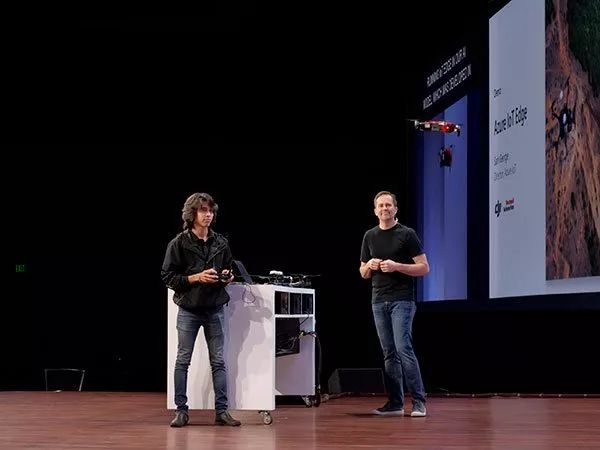
Abstract: At the just-concluded Microsoft Build 2018 Developer Conference, Microsoft Xiaona showed how she intelligently scheduled meeting rooms. It seems to be no different from ordinary people, but in fact artificial intelligence is far from as clever as you think! In an interview with the "21st Century Business Herald," Hong Xiaowen, director of the Microsoft Asia Research Institute, said that today's artificial intelligence is more like a black box that cannot be summarized and understood. It can only match preset models and export results based on input. On the contrary, human beings are white boxes that can understand, summarize and predict. AI can help humans accomplish many professional tasks, but in the face of the need for analysis and decision-making, it also requires human intelligence.
The surprise that AI (Artificial Intelligence) brings to humans continues
Local time May 8 (Beijing time on the morning of May 9), 2018 Google I/O Developers Conference opened. In the whole process of the conference, the most eye-catching thing was Google Assistant's call to make a mess: At the time of booking the barber shop, Google Assistant not only clearly expressed his booking request, but even responded to complex dialogue scenes. For example, when the barber's attendant informs him that the required 12 o'clock arrival time is full, and that the most recent time is only 1:15 pm, it asks again if there is a 10 o'clock to 12 o'clock appointment.
At the 2018 Microsoft Build Developer Conference the day before, Microsoft’s voice assistant Xiaona also “showed†his own “showâ€. In the on-site demonstration of the smart meeting room, the demonstrators made use of Xiao Na’s smart device voice to book the meeting room. Even when each participant entered the meeting room, Xiaona could read his name and take the initiative to greet him. Conducting various interactions is no different from an ordinary person.

But is artificial intelligence really "smart" as it looks?
"Today, whether it is artificial intelligence supported by technologies such as speech recognition, text translation, or computer vision, they do not really understand the meaning of the information they accept. They just match the default model." May 8, Microsoft Global Senior Vice President, Microsoft Asia-Pacific R & D Group Chairman and Hong Xiaowen, President of Microsoft Research Institute in Asia, bluntly stated that "it is only a black box, can not be summarized and understood, only knows that according to the input export results."
Correspondingly, humans can understand. It is not only the understanding of concepts that are already known to us, but even the face of unknown things. It can also be based on one's own past experience to try to understand, to sum up, to sum up, in the opposite sense. This is the so-called "white box."
It is worth noting that white boxes are smart, but there are deviations, black box machinery, but they are more just, which have their own advantages and disadvantages. Therefore, Hong Xiaowen believes that AI can help humans do some professional tasks. In the face of analysis and decision-making, human intelligence is needed. “AI+HI (artificial intelligence + human intelligence) is very important.â€
However, although AI itself is still in the black box stage, intelligent edge computing with AI terminals is rushing to the surface. This point, from the Microsoft Build Developer Conference this year, we frequently mentioned smart edge computing, and with drones, Qualcomm's development of relevant development kits will be evident. According to Hong Xiaowen, intelligent edge computing will certainly occur, and it is particularly worth looking forward to.

Black box and white box
"21st Century": At this year's Build Conference, live intelligence was demonstrated. Currently, foreign intelligent voice technology has found smart speakers as a relatively popular landing scene, and domestic efforts are still being explored. Is this behind the question of Chinese speech technology itself?
Hong Xiaowen: Even if we have a dialect, Chinese speech recognition is not difficult in English. As long as we collect enough data, it is not a problem. The popularity of foreign smart speakers (especially Echo with Amazon Alexa) is still related to the Amazon e-commerce business. Foreign users are accustomed to shopping on Amazon and are willing to try to use more convenient smart speakers to shop. In addition, foreign users have a large home space and like to listen to music. They have their own needs for speakers. Therefore, this form of terminal is more likely to be popularized.
As for domestic users, they usually prefer to interact with their own smart phones, and experience functions such as shopping and listening to music on mobile phones. This is convenient and intuitive for these users, and has developed such habits. These factors have led to smart speakers. There is no popularity in the country.
"21st Century": As far as voice technology is concerned, you mentioned that identification is not a problem. Where is the current problem?
Hong Xiaowen: The current feedback of artificial intelligence on speech includes three stages: identifying, understanding and providing services. The difficulty of the problem lies in understanding. Since the content to be understood has an infinite combination of its own, there is no precise model and no construction mode can be used. This is irrespective of the more complicated intentional situation. Today's AI is only a black box, but the understanding itself is a white box, which is the ability of human beings: not only to understand the information they have accepted, but also to guess and partly understand the meaning of information they do not understand. This is very difficult for today's AI and requires newer technologies.
"21st Century": Is there a boundary between the application of black boxes and white boxes? Or black boxes will need to be transformed into white boxes?
Hong Xiaowen: For some inference processes, white boxes must be needed. Systems without white boxes are difficult to reason. Even if the black box can be inferred, it only exists when the output is exactly the next input, which is the limitation of the black box.
But the black box also has its benefits. From a certain point of view, it will not be biased. What is it and what is it is very fair. There is an established position for white box reasoning, such as how much prejudice the human mental state will have. For example, abortion, gender tendencies, and other easily controversial issues stem from each person’s established position. What is inferred from this position is bound to be biased. The black box will not, so a character like the judge needs black box thinking and how to input it.
Therefore, the current rational state should be AI+HI (artificial intelligence + human intelligence). AI can be dedicated to process analysis, but in-depth analysis, understanding, and creation still depend on humans.
Interpretable AI
"21st Century": Although artificial intelligence is still in the black box stage, it is inexplainable and understandable. It will soon be unable to understand exactly how it operates internally, which in turn will cause humans to feel distrustful of artificial intelligence. In fact, the European Union is also trying to promote the transparency of AI algorithms recently. How do you understand this uninterpretable AI?
Hong Xiaowen: First of all, I can explain AI. Explain that AI has two layers of meaning. The first meaning is that after entering the information, you can know the reason for the result. From this perspective, I think it can be explained, but the process of interpretation is very complicated. For example, after AlphaGo uses reinforcement learning and eventually falls on the board, you cannot explain the rules behind it, but you understand that it uses reinforcement learning to make this step. The purpose of this step is to win the game. Knowing the results, but just not knowing what the rules behind the results are, it must have rules, but this rule is cumbersome to be exhaustive, which is to explain AI.
The so-called non-interpretable AI, in my opinion, is actually a second-level interpretable AI, that is, a result that cannot be understood by ordinary people, such as the identification of blacks as orangutans. In my opinion, this is still interpretable AI: The reason why such results occur is because there are deviations in the training data, so it is still interpretable.
In addition, whether the person designing the AI ​​system can predict the consequences of inputting information and obtaining results. If this consequence can be expected, a set of theory will be prepared to explain it. Even in the event of a crisis, it will have its own set of logic.
"21st Century": So from a technical point of view, the usual meaning of AI's unexplainability is caused by data deviation. What can AI technicians do in this situation?
Hong Xiaowen: The result of data deviation is very serious. Take real life as an example. For example, the risk control system determines that someone cannot make a loan because the person comes from an area with a low average income. AI based on this basic rule will lead to prejudice or even discrimination. For technicians, whether or not it is possible to know in advance such an unreasonable loophole and even better to block the loophole is its responsibility.
Smart Edge has come
"21st Century": Regardless of the current strength of artificial intelligence, but after all, there are many applications and even applications in the terminal. Compared to previous years, smart edge computing has emerged at the Microsoft Build Conference this year. How do you view the industries and scenarios for edge computing in the future?
Hong Xiaowen: When the AI ​​application just happened, most of it happened in the cloud. But today, with visual applications as an example, video capture devices are evolving from 4K to 8K, and the corresponding number of pixel frames has also increased significantly, resulting in an explosive growth in data volume. Even if 5G technology develops in the future, there is a huge amount of data that needs to be transmitted. Therefore, I boldly predicted that many visually relevant services, smart factories and other scenarios will generate a large number of terminal computing, namely edge computing.
"21st Century": What are the characteristics of edge computing scenarios?
Hong Xiaowen: Most of the data training will happen in the cloud, because the cloud has advantages in data collection and training. However, scenes such as smart factories and smart security need instant feedback and need to be determined. Therefore, most terminals need at least the ability to perform and identify.
In addition to the transmission speed, there is the problem of transmission energy consumption, and a large amount of data transmission is bound to have a lot of energy consumption. In fact, even if the terminal wants to interact with the cloud in the smart factory, it is short-distance transmission and then sent to the cloud. Since there is a clustering process, some processing and intelligence functions can be given locally in the process. From the perspective of energy consumption, this approach is also the most energy-efficient. So the terminal calculation will inevitably happen.
Withstand high voltage up to 750V (IEC/EN standard)
UL 94V-2 or UL 94V-0 flame retardant housing
Anti-falling screw
Optional wire protection
1~12 poles, dividable as requested
Maximum wiring capacity of 4 mm2
4 mm2 Terminal Blocks,high quality terminal strips,high performance terminal barriers,BELEKS T04 series terminal connectors,3 amp connector strips
Jiangmen Krealux Electrical Appliances Co.,Ltd. , https://www.krealux-online.com